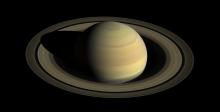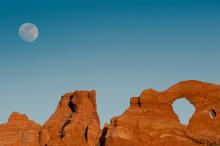Listen to today's episode of StarDate on the web the same day it airs in high-quality streaming audio without any extra ads or announcements. Choose a $8 one-month pass, or listen every day for a year for just $30.
You are here
Winter
The cycles of day and night, of years, and even of the seasons are all astronomical phenomena — they’re the results of the motions of Earth, one of the Sun’s eight major planets.
Day and night are obvious — they’re caused by Earth’s rotation on its axis. And so is the year — it’s the amount of time it takes Earth to make one full circle around the Sun.
The seasons may not be quite as obvious, but they, too, are caused by Earth’s year-long journey around the Sun. In fact, that journey will take us to the start of winter tomorrow. It arrives at 10:28 a.m. Central Time — the moment of the winter solstice. The Sun stands farthest south for the year, and it’s the shortest day of the year north of the equator.
The seasons change because Earth’s tilt toward the Sun changes.
Earth is always tilted at the same angle — about 23 degrees. And the axis always aims at the same point in the sky — Polaris, the North Star.
As viewed from the Sun, though, Earth appears to nod up and down over the course of a year. At the start of northern summer, the north pole dips toward the Sun during the day. That gives us longer days here in the U.S. At the start of northern winter, though, Earth is on the opposite side of the Sun, so the south pole nods toward the Sun. That brings long days to the southern hemisphere, but short days and long nights to the north.
So the seasons are a result of astronomy — an interaction between a planet and a star.
Script by Damond Benningfield






